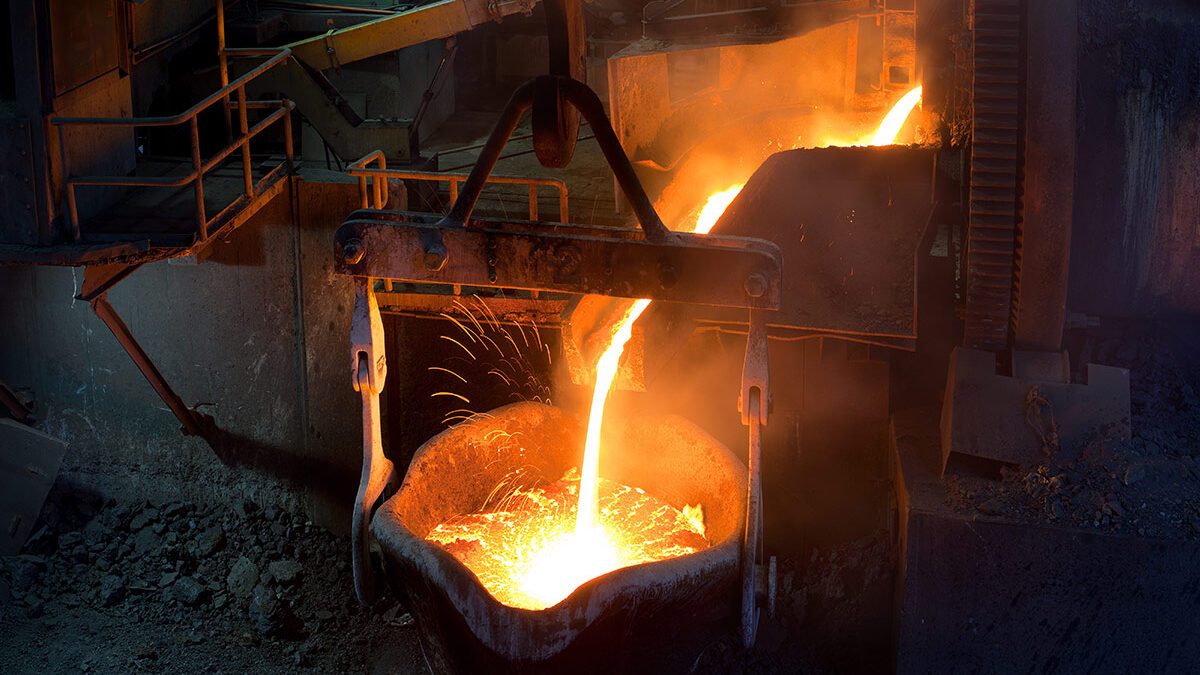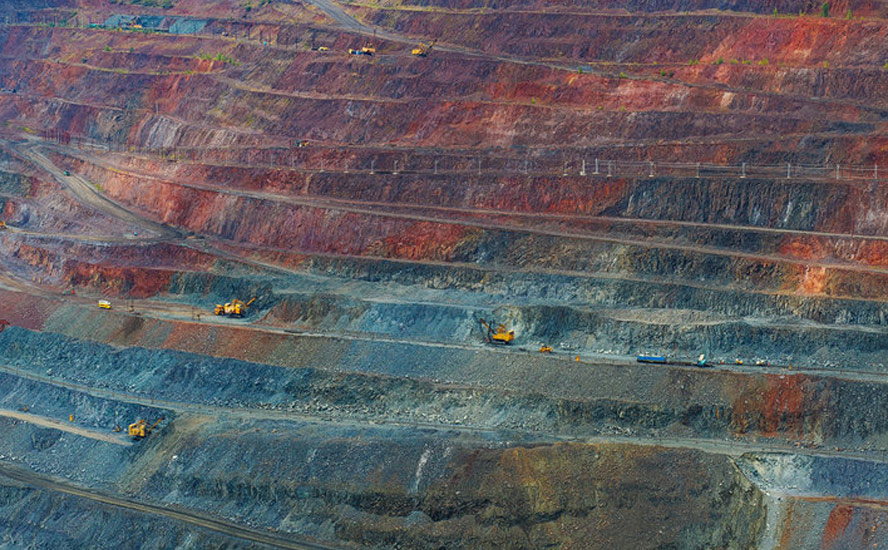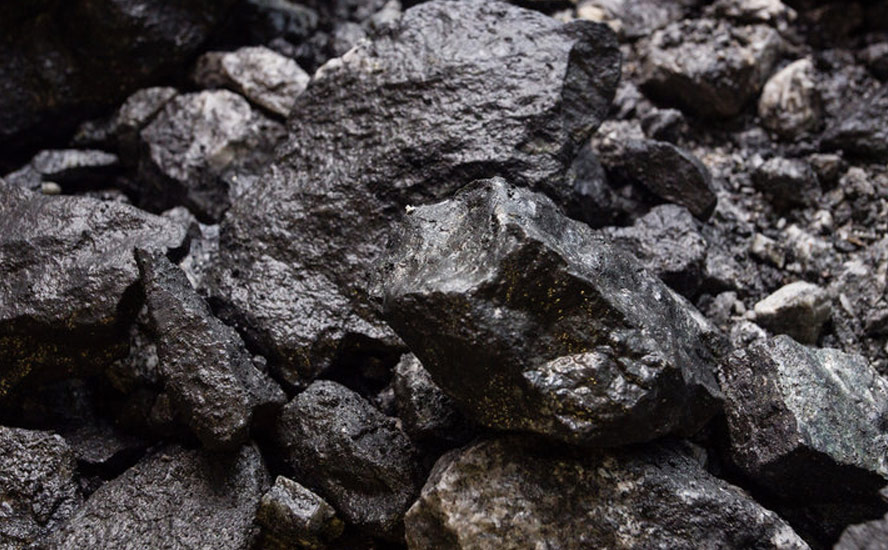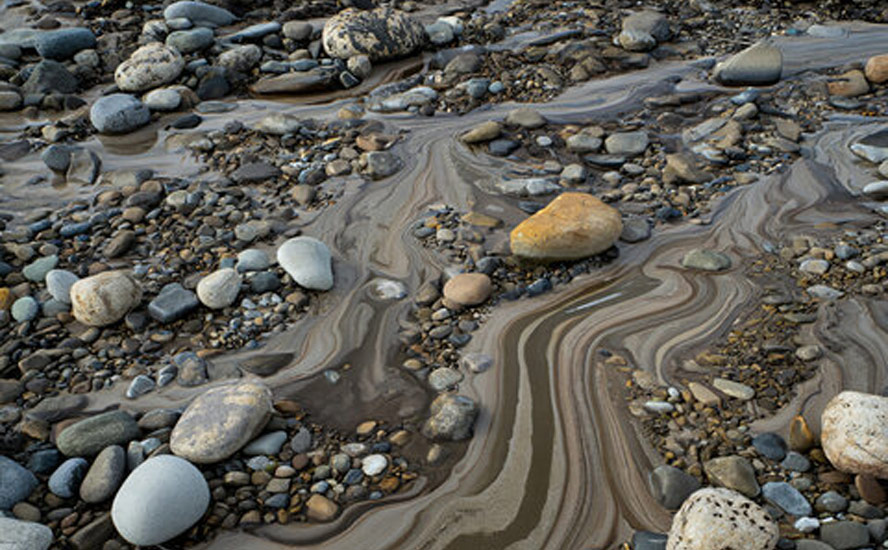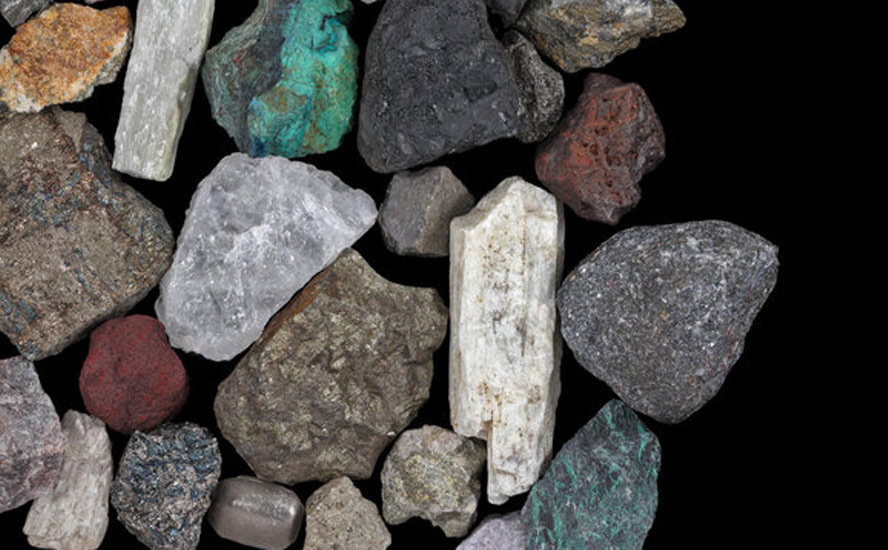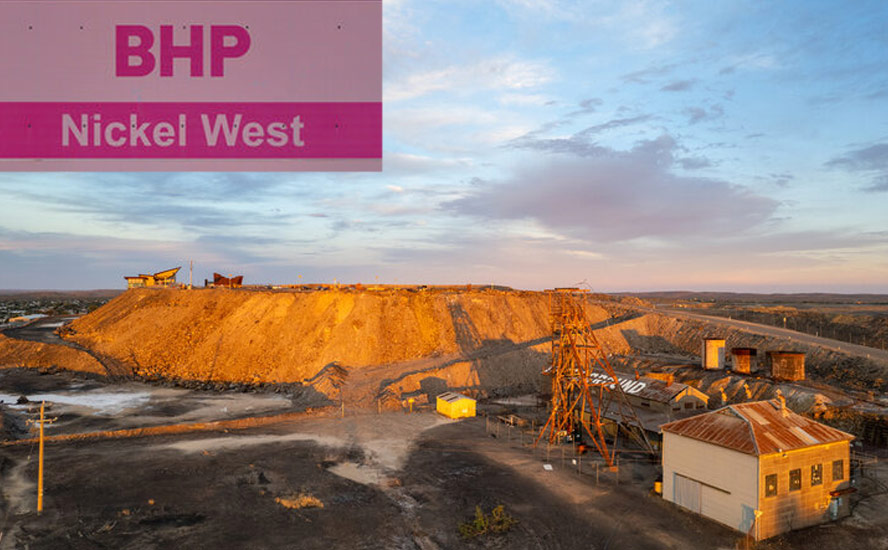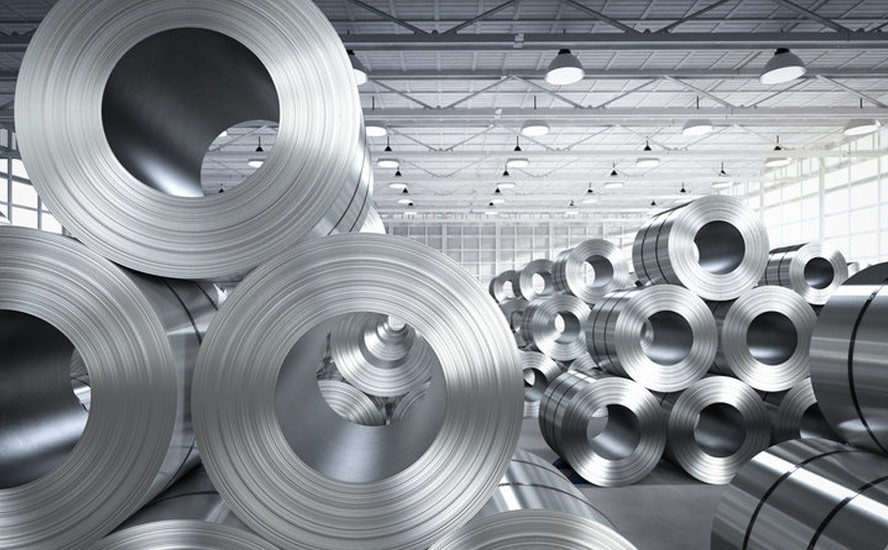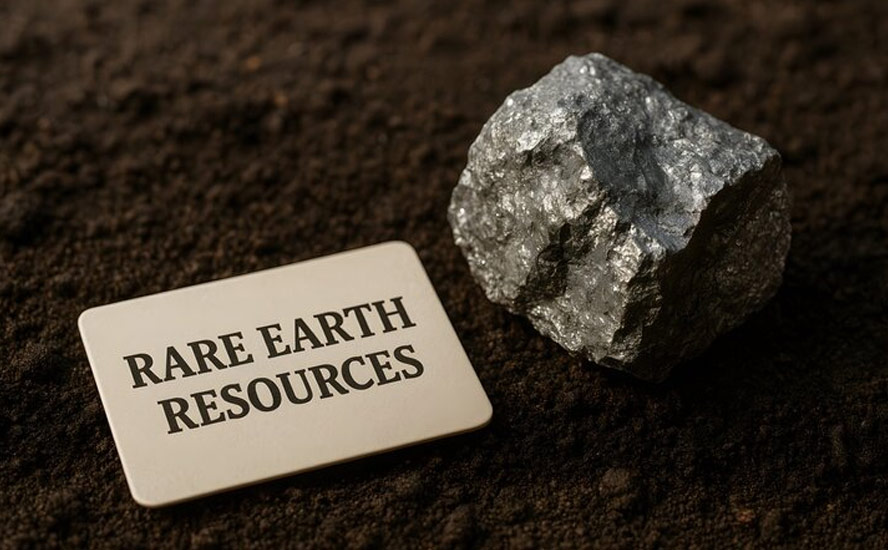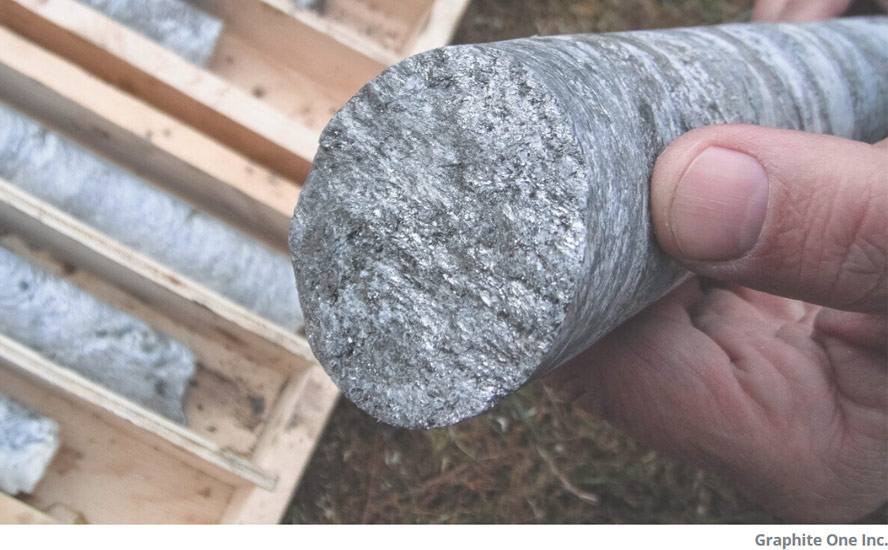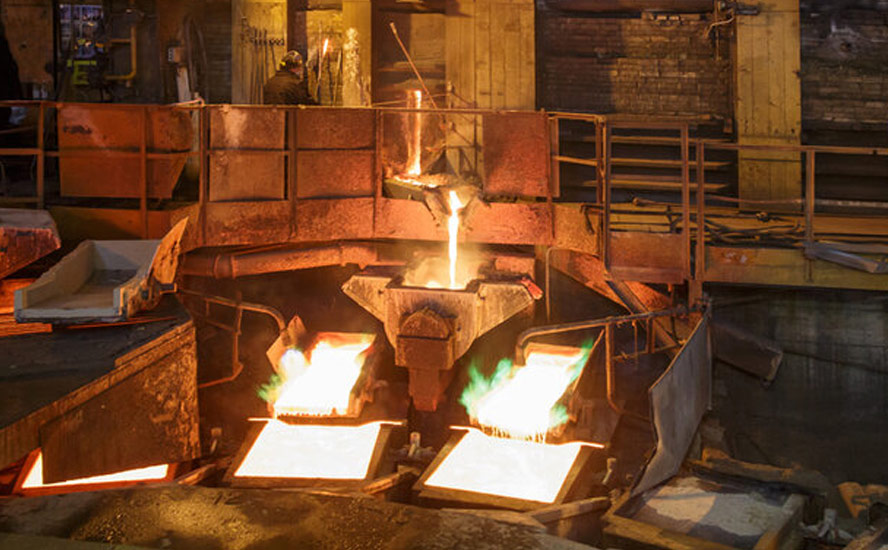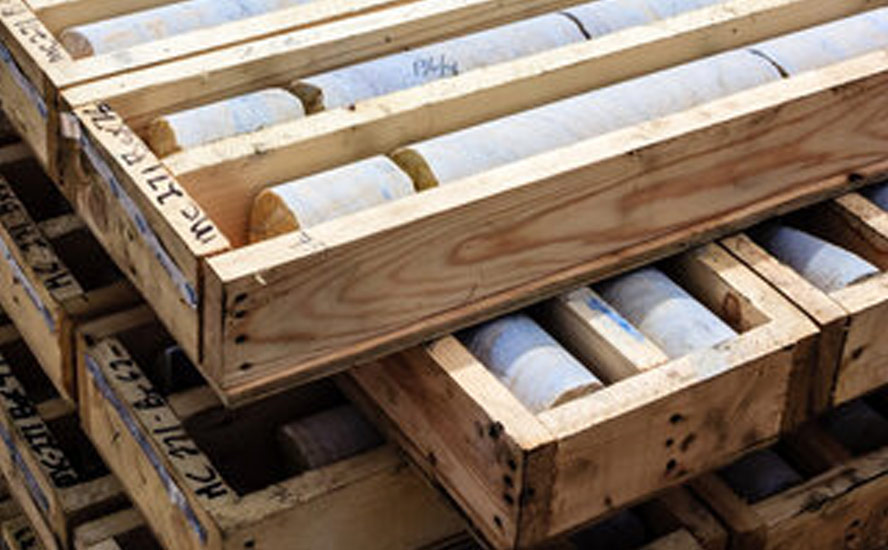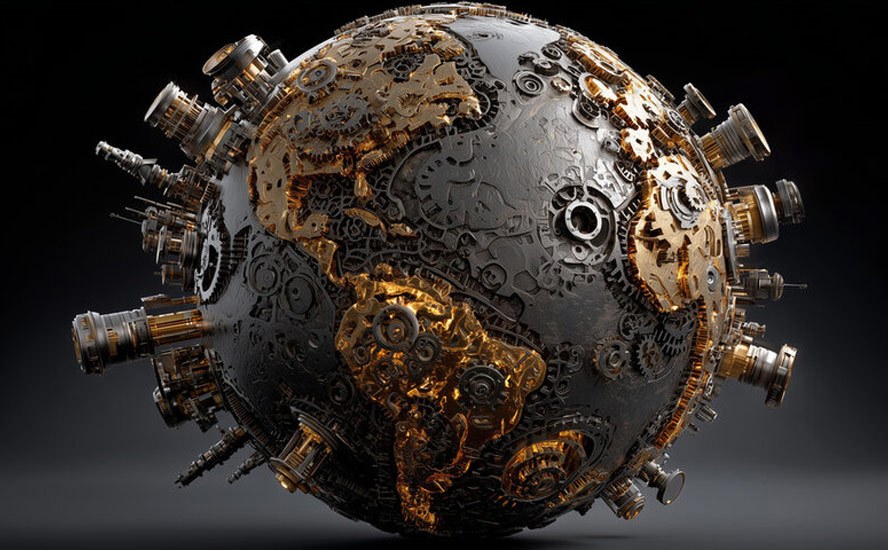Pampa Metals has clear sight of several porphyry targets along Chile’s copper-rich mineral belts
2021.12.06
With each energy transition comes the new need for more materials. At the heart of the global shift to clean energy sources is copper — the metal that will help connect and deliver renewable energy to the world.
The key contributors to clean energy, such as solar, wind and battery technologies, are mineral intensive. Copper, owing to its superior combination of conductivity, ductility, efficiency and recyclability, is the standout metal used in most of these applications.
According to the International Copper Association, the generation of clean energy from solar and wind has a copper usage that is typically 4-6 times more than fossil fuels. It is estimated that each 3 megawatt (MW) wind turbine contains up to 4.7 tonnes of Cu, while solar power systems contain 5.5 tonnes per MW. In North America alone, it is projected that 1.9 billion lb of copper will be required on new solar installations by 2027.
In energy storage applications, depending on the technology, up to 540 lb/MW of copper content may be required (i.e. flow battery). Copper is found in the wiring and cabling that connect renewable power generation with energy storage devices, as well as in the switches of transformers that help to deliver power at the right voltage.
Electrification of the transportation system cannot be achieved without copper either; the industrial metal is a major component in electric vehicles, which is set to replace many of the internal combustion engine (ICE) vehicles during this clean energy transition. EVs use copper for the motor coil that drives the engine, typically four times more than their ICE counterparts.
Copper is also required to build related EV infrastructure, such as cabling for charging stations. For example, BYD charging ports ranging from 3.3 kW to 200 kW contain between 2-17 lb of copper. According to IDTechEx, BYD’s total sale of chargers in 2016 used more than 295,000 lb of the metal.
Copper Entering Deficit
Given that the electrification of vehicles is a major tenet of various climate goals, it is conceivable that the world’s copper usage would ascend to unprecedented levels.
Consulting firm AlixPartners estimates that EVs, which at the moment only represent 2% of the total global vehicle sales, will make up 24% of total sales by 2030.
In 20 years, BloombergNEF predicts that global copper production must double to meet the demand for a 30% penetration rate of electric vehicles — from the current 20 million tonnes a year to 40 million tonnes.

Overall, Roskill forecasts that the world’s total copper consumption is set to exceed 43 million tonnes by 2035, driven by population and GDP growth, urbanization and electricity demand.
But the real concern is whether there’ll be enough copper to meet this demand. At the current rate of mine production, this is impossible.
According to S&P Global Market Intelligence, due to a shortage of projects, copper supply will lag demand in the long term.
While the New York-based analytics firm expects mined copper production to rise to 21.87Mt and 26.14Mt in 2021 and 2025, respectively, from 21.16 Mt in 2020, that would not prevent a supply gap in the years following.
Production from existing copper mines is expected to increase at a CAGR of 1.0% in 2021-25 but fall at a CAGR of 4.7% in 2026-30, driven by declining ore grades and mine closures, it estimates.
As a result, production from existing operating mines — not considering those assets that are starting up, project expansions or mine restarts — is projected to fall to 15.90Mt in 2030 from 20.53Mt in 2021.
Diminishing supply from currently operating mines, combined with the projected increase in demand for copper concentrate over 2021-2030, would result in a 3.85Mt production shortfall in 2025, according to S&P Global data.
CRU Group forecasts an annual supply deficit of 4.7 million tonnes by 2030 as the clean power and transport sectors take off, with the copper industry needing to spend upwards of $100 billion to close that gap.
From 2026 to 2030, the copper mining industry will be unable to meet a growing demand for concentrate, even when including uncommitted development-stage projects that could potentially move forward and start up during this period, S&P Global warns.
Energy research and consultancy Wood Mackenzie believes that a shortage of projects has already been threatening supply since mid-decade.
Just prior to the global financial crisis in 2008 there were around 4.8Mt of probable projects available to be developed. That equated to 30% of the existing market at the time, or approximately 10 years of growth. By comparison, there are currently just 1.7 Mt of probable projects, only enough to meet less than three years of demand growth.

Dwindling copper reserves and lower ore grades at some of the world’s largest mines also mean that a new deposit would just be replacing the existing output, thus not contributing to supply growth at all.
CRU estimates that over 200 copper mines are expected to run out of ore before 2035, with not enough new mines in the pipeline to take their place.
Remember, at least 20Mt of copper supply must be developed in the next two decades, the equivalent of one large million-tonne mine (i.e. Escondida) every year from now on.
The solution, as simple as it sounds, is to have more copper projects that can be developed into producing mines.
Copper Mining in Chile
As the global race to secure EV minerals enters its crucial stages, increased attention will be directed towards Chile — the leading copper producer in the world. The Latin American nation has a long history of copper mining and continues to be a hotbed of exploration activity.
For years, Chile has been the ideal “elephant” copper deposit hunting ground for the big-name mining companies. Boasting the biggest copper reserves worldwide, at 200 million tonnes, means Chile’s dominance isn’t waning anytime soon.
Around 80% of Chilean copper production comes from copper-gold porphyry deposits, with most situated in the desert areas in the northern part of the country. These porphyries, which are also rich in molybdenum with silver byproducts, provide ore for some of the world’s most prolific and highest-grade copper mines.
Northern Chile has some of the largest copper and gold deposits in the world, formed from a combination of factors, but generally associated with intrusive-extrusive magmatism and tectonic activity on the western boundary of the South American plate.
Several metallogenic belts developed, reflecting changes in the tectonic setting and igneous activity. These include the Miocene High Cordillera Belt, the Mid-Terciary Domeyko Cordillera Belt, the Paleocene Central Belt, the Mesozoic Coastal Belt and the Overlap Paleocene and Domeyko Belt.

Naturally, given northern Chile’s copper riches, some of the mining industry’s largest red-metal producers have flocked to the region. Chilean state-owned Codelco operates El Teniente, the world’s largest underground copper mine, along with Chuquicamata, the second deepest copper mine on Earth and one of the largest open-pit mines.
Other major copper miners, who have undertaken significant exploration and production, include BHP, Freeport McMoran, Rio Tinto and Antofagasta Minerals. The latter has four operating mines in Chile including its flagship Los Pelambres in the Coquimbo region.
Escondida, owned by BHP, Rio Tinto and a Japanese consortium headed by Mitsubishi, is the largest copper mine by capacity at 1.4Mtpa (and the largest producer of copper cathodes and concentrates). Collahuasi, another top Chilean copper mine, is jointly owned by Anglo American, Glencore and Mitsui.
Still, many areas along the copper-rich mineral belts of northern Chile remain underexplored to this day, offering further growth opportunities to those holding competitive greenfield land positions in this premier copper-producing region.
Greenfield Exploration Opportunity
In recent years, there has also been an influx of mid-tier and junior mining companies looking for the next big copper discovery in northern Chile.
One of the most promising landholders in the region is Pampa Metals (CSE:PM) (FSE:FIRA), which controls 100% interest in eight exploration projects that are prospective for copper (and gold). These projects cover a total area of over 59,000 hectares, which is almost unrivalled by any other junior miner in Chile.
The company’s projects (Arrieros, Block 2, Redondo-Veronica, Block 3, Block 4, Cerro Buenos Aires, Cerro Blanco and Morros Blancos) are all located along the proven mineral belts of the Atacama region, including the Central Paleocene and Domeyko belts, that have dominated the world’s copper production.

As shown on the map above, five of these projects are situated along the mid-Tertiary porphyry copper belt of northern Chile — the Domeyko Cordillera — that is host to three of the world’s top five copper mining districts: Collahuasi, Chuquicamata and Escondida.
The remaining three are located in the heart of the Paleocene mineral belt, which hosts a series of important porphyry copper deposits and mines such as Cerro Colorado (BHP), Spence (BHP), Sierra Gorda (KGHM & Sumitomo) and Relincho (part of Nueva Union – Teck-Goldcorp).
The Chilean Atacama Desert is characterized by elevated ranges of mountains, separated by relatively flat, piedmont-gravel-filled “pampas” that conceal the underlying geology.
These areas remain underexplored because they contain a layer of gravel, 30-50m thick, that was deposited after the formation of the porphyries. A rough estimate suggests at least 50% of northern Chile is covered by pampas, meaning that half of the region’s undiscovered mineral deposits may be concealed by a thick gravel cap.
Notwithstanding the important discoveries noted above, there are still very large areas of untested pampas in northern Chile that have the potential to conceal significant mineral deposits.
Outcrops in the pampas are rare, however if found, they can display similar characteristics, in terms of geology and hydrological alteration, as copper porphyry deposits. Pampa Metals’ game plan is to first conduct surveys to find the outcrops, and then sample and drill them.
Exploration Progress
For Pampa Metals, this year’s exploration focus is to advance four of the properties under its portfolio, with the company relying on third-party expenditure on two other projects.
Details of its latest technical update are summarized below:
- Cerro Buenos Aires: Drilling continued vectoring towards a large and well-developed copper-gold porphyry-related alteration and mineralization system, covered by post-mineral gravels, where follow-up deeper diamond drilling is being planned.
- Redondo-Veronica: Drilling has indicated deep porphyry potential with vectors derived from hydrothermal alteration and geochemical anomalies found in relevant drill holes, together with geophysical anomalies. Follow-up deeper diamond drilling is being contemplated.
- Block 4: Fieldwork has revealed the coincidence of a discrete magnetic high with a dacite porphyry intrusion exhibiting an intense quartz-veinlet stockwork zone. Further fieldwork, including trenching due to limited outcrops, is planned to help define drill targets.
- Block 3: Fieldwork has revealed multiple magnetic features of potential interest in post-mineral covered areas, and geological mapping around the periphery of the covered areas has confirmed the prospective nature of the area. Further geophysical surveying is being planned to help define possible drill targets.
- Third-party expenditures: Pampa Metals’ partner, Austral Gold Ltd., has commenced fieldwork at the Morros Blancos project and has recently announced positive preliminary results for a gold target. A second optioned project, Cerro Blanco, is also being advanced by Austral.
All drilling and fieldwork mentioned above were completed less than a year into the company’s inception, demonstrating the experience and proficiency of the Pampa Metals exploration team, given the amount of progress it has made.
Its relatively shallow drill testing of four target areas at the Cerro Buenos Aires and Redondo-Veronica projects has already given the company a clear line of sight towards at least two, and possibly three, deep porphyry copper targets.
Extensive geophysical campaigns, including drone-flown and ground-based magnetic surveys, 3D Vector IP, gradient array IP, and magnetotelluric surveys, have complemented detailed geological mapping in the field by a porphyry copper expert on five properties.
The recent discovery of a potentially important zone of quartz veinlet stockworking at the Block 4 project brings further encouraging news along the company’s copper exploration quest.
“We believe the company has delivered on an aggressive approach to exploring its greenfield property portfolio in some of the most geologically prospective mineral belts in the world,” Pampa Metals CEO Julian Bavin, who was a former exploration director at Rio Tinto, stated in the company’s latest news update.
Conclusion
For years, the mineral belts of northern Chile have been the top copper mining hub on the planet. Despite the long and rich mining history, it still contains deeply concealed porphyry copper systems that have been largely unexplored to this day.
With one of the largest landholdings ever attained by a junior miner in the region, Pampa Metals stands to capitalize on some of the areas that major miners may have missed while conducting brownfield exploration on the peripheries of existing mines.
Drilling so far has already shown signs of a fertile porphyry system, which will surely be followed up by more drilling and positive results.
Pampa Metals Corp.
CSE:PM, FSE:FIRA
Cdn$0.32, 2021.12.03
Shares Outstanding 39.1m
Market cap Cdn$13.3m
PM website
Richard (Rick) Mills
aheadoftheherd.com
subscribe to my free newsletter
Legal Notice / Disclaimer
Ahead of the Herd newsletter, aheadoftheherd.com, hereafter known as AOTH.
Please read the entire Disclaimer carefully before you use this website or read the newsletter. If you do not agree to all the AOTH/Richard Mills Disclaimer, do not access/read this website/newsletter/article, or any of its pages. By reading/using this AOTH/Richard Mills website/newsletter/article, and whether you actually read this Disclaimer, you are deemed to have accepted it.
Any AOTH/Richard Mills document is not, and should not be, construed as an offer to sell or the solicitation of an offer to purchase or subscribe for any investment.
AOTH/Richard Mills has based this document on information obtained from sources he believes to be reliable, but which has not been independently verified.
AOTH/Richard Mills makes no guarantee, representation or warranty and accepts no responsibility or liability as to its accuracy or completeness.
Expressions of opinion are those of AOTH/Richard Mills only and are subject to change without notice.
AOTH/Richard Mills assumes no warranty, liability or guarantee for the current relevance, correctness or completeness of any information provided within this Report and will not be held liable for the consequence of reliance upon any opinion or statement contained herein or any omission.
Furthermore, AOTH/Richard Mills assumes no liability for any direct or indirect loss or damage for lost profit, which you may incur as a result of the use and existence of the information provided within this AOTH/Richard Mills Report.
You agree that by reading AOTH/Richard Mills articles, you are acting at your OWN RISK. In no event should AOTH/Richard Mills liable for any direct or indirect trading losses caused by any information contained in AOTH/Richard Mills articles. Information in AOTH/Richard Mills articles is not an offer to sell or a solicitation of an offer to buy any security. AOTH/Richard Mills is not suggesting the transacting of any financial instruments.
Our publications are not a recommendation to buy or sell a security – no information posted on this site is to be considered investment advice or a recommendation to do anything involving finance or money aside from performing your own due diligence and consulting with your personal registered broker/financial advisor.
AOTH/Richard Mills recommends that before investing in any securities, you consult with a professional financial planner or advisor, and that you should conduct a complete and independent investigation before investing in any security after prudent consideration of all pertinent risks. Ahead of the Herd is not a registered broker, dealer, analyst, or advisor. We hold no investment licenses and may not sell, offer to sell, or offer to buy any security.
Richard does not own shares of Pampa Metals Corp. (CSE:PM). Pampa is a paid advertiser on his site aheadoftheherd.com
Legal Notice / Disclaimer
Ahead of the Herd newsletter, aheadoftheherd.com, hereafter known as AOTH.Please read the entire Disclaimer carefully before you use this website or read the newsletter. If you do not agree to all the AOTH/Richard Mills Disclaimer, do not access/read this website/newsletter/article, or any of its pages. By reading/using this AOTH/Richard Mills website/newsletter/article, and whether you actually read this Disclaimer, you are deemed to have accepted it.

